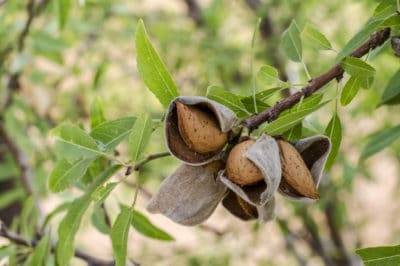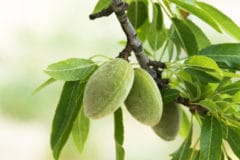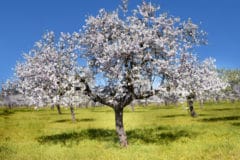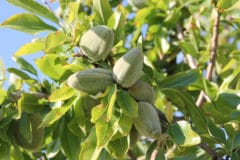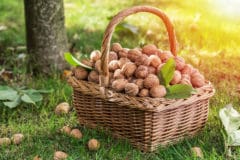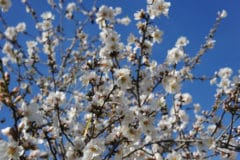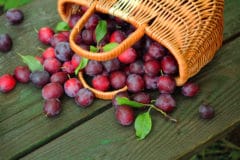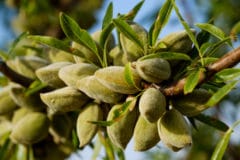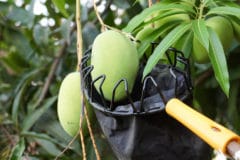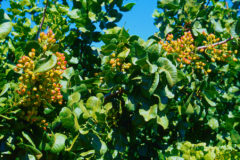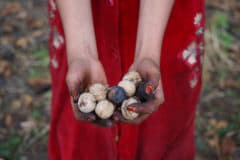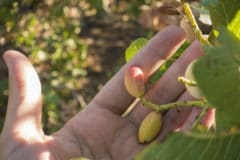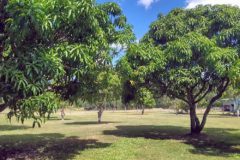Timing Your Harvest
Ripe almond fruits (they come from flowers, so they’re technically fruits)resemble small, grayish-green peaches. When about 95 percent of a tree’s fruits have split open to reveal their inner shells, it’s time to get to work.
Expert gardener’s tip: Because the fruit ripens from the top of the trees down, many home gardeners find semi-dwarf almond cultivars such as ‘All-in-One’ and ‘Garden Prince’ the easiest to monitor.
Things You’ll Need
When harvest day arrives, you’ll need:
- Gardening gloves
- Head protection
- Clean, sharp gardening shears
- A taped bamboo pole long enough to reach the top branches
- An almond mall — a rubber mallet for striking small branches
- Tarps
- Containers to hold the harvest
- Drying screens
- Bird netting
Expert gardener’s tip: Before tackling the trees, rake up the fallen fruit and put it in containers.
Hand-Harvesting Almonds
When harvesting almonds, many hands really do make light work. Lifting a little one to shake out-of-reach branches saves time, so strong shoulders are a plus. Whether you’re one or many, the process is the same:
- Put on your gloves and protective headgear.
- Spread the tarps under a tree, pluck or prune all the ripe fruit within reach and let it fall.
- Shake the smaller accessible branches to loosen stubborn fruit; strike larger ones with the almond mall. Then go after the upper branches with your long pole.
- When the tree has no more fruit to give, put what’s fallen into your containers so insects don’t invade it.
- Repeat for each tree.
Drying the Fruit
Pop the almonds from their hulls and spread them in single layers on your drying screens. Cover them with bird netting, set them in a sunny outdoor spot to dry and stir several times daily. Keep them outside from early morning until sunset and move them under cover during rain.
Expert gardener’s tip: When the almond kernels rattle inside their shells, they’re ready to eat. Before shelling, store them in disposable plastic containers at 0°F (-17.8°C) for one or two weeks to kill pests and their eggs.
